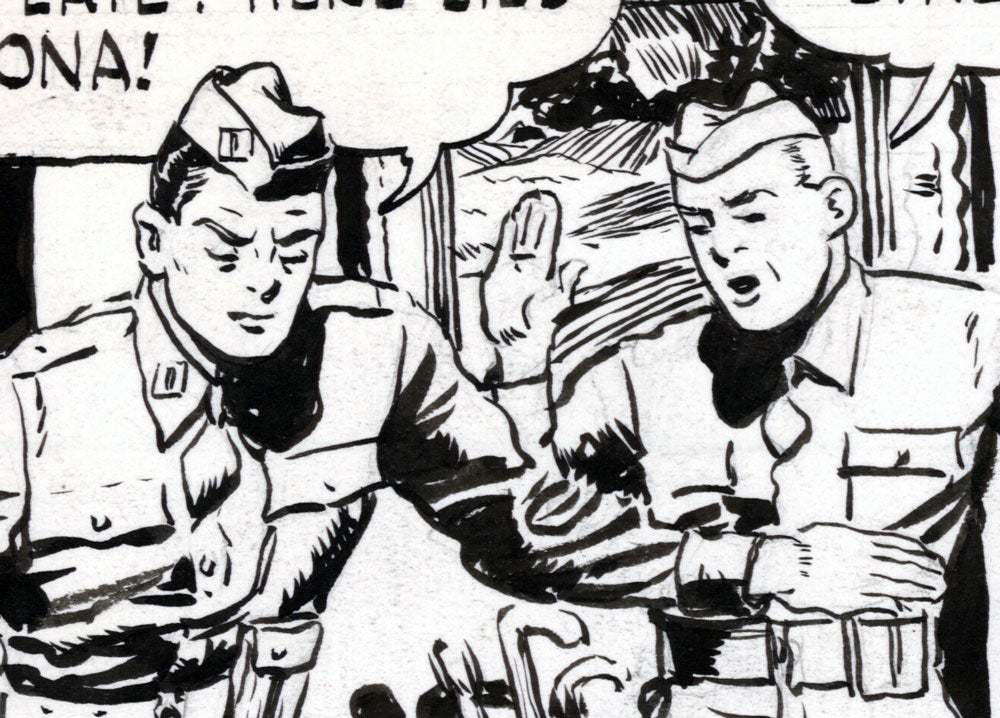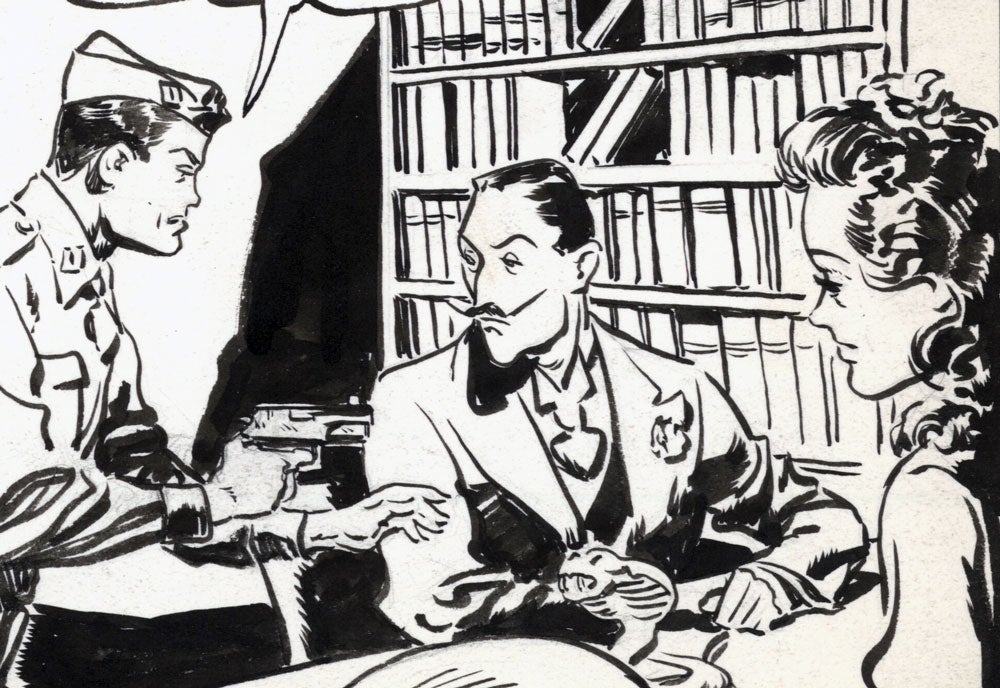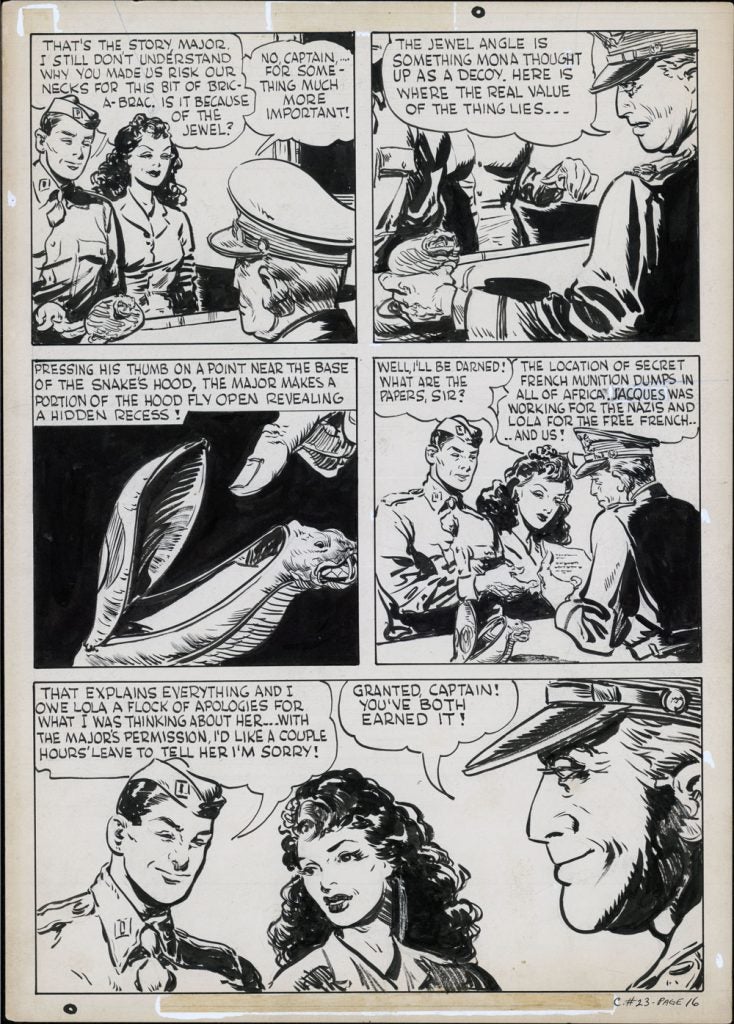

“Under Paid is Right” (December 16, 1941)
by Will B Johnstone (1881-1944)
11 x 22 in., ink on board
Coppola Collection
Johnstone studied at the Chicago Art Institute, after which he became an artist with the Chicago Interocean. He illustrated the daily news events, and Johnstone was the first person to diagram football games showing every play for each team. He eventually moved to New York City, where he began doing illustrations for William Randolph Hearst’s newspapers. Later on, he moved to The World, which was later renamed to The New York World-Telegram. He did a comic strip based on the news of the day. This feature had a recurring character that depicted a victimized tax payer. The man in question had been literally stripped down in the nude after paying his taxes and therefore walked around wearing nothing but a barrel. This has become a stock image in many humoristic cartoons and comics.
Johnstone and his brother were playwrights, and co-wrote ten musicals that were produced on Broadway. For his play, “I’ll Say She is,” he recruited Groucho Marx and then rewrote the play to bring in all the Marx brothers. Johnstone was a co-writer on “Monkey Business,” “Horse Feathers,” and “a Day at the Races.”
Before the direct involvement of US troops in WW2, privates in the US Army earned $21 a month. US soldiers were stationed in the Philippines in late 1940, in anticipation of US involvement in the war. The day after Pearl Harbor, the Japanese made their first landings on Philippine soil, and the action in the Pacific Theater was underway. The first weeks were active, but the US soldiers were using old munitions and the supply lines began to be cut off.
Things moved fast. The main attack took place December 22, 1941, and by March, the Japanese had taken the main island and occupied Manila.

















